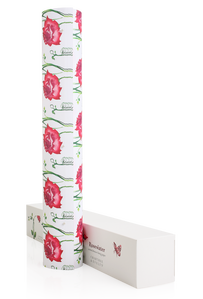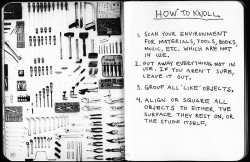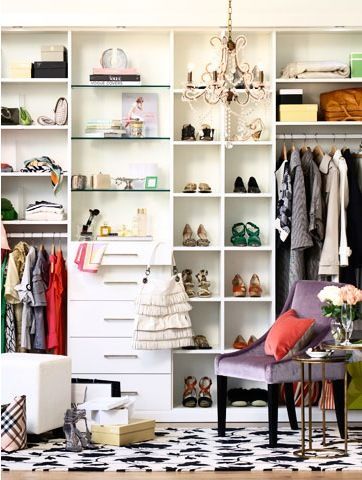My boyfriend is going to be out of town this weekend, which means I was outwardly sad but secretly glad of the opportunity to do all the girly stuff I like doing on my own. 1) Instead of toiling for hours making a full-on feast for brunch AND dinner, grabbing a cold-pressed juice whenever I feel like–or even eating “weird” combination of things like a pint of fresh fruit and steamed veggies for dinner. 2) Going to yoga and getting my monthly mani pedi. (wee!!) 3) Cleaning the heck out of my closet and rearranging everything for fall.
If you live in a small apartment like I do, chances are you’ve been storing your fall/winter clothes in a trunk or under your bed, or other creative spaces (top of the kitchen cabinet!). Take a few hours this weekend to do a switcheroo between your warm and cold clothes, and reorganize your closet. This will be a good chance to take inventory of your existing clothes, so you can donate anything you won’t be wearing and figure out what you do need for this season. Hint: start reorganizing tonight or tomorrow morning, so you’ll be able to donate old clothes at the Saturday farmer’s market–then you can treat yourself by going shopping on Sunday! (My Friday nights are so…wild and crazy.)
7 Steps to organizing your closet for fall
0. This is a pre-step but it’s really important so don’t ignore it! Clean the rest of your room first so a) you’re not overwhelmed by the jumble of clothes and b) you’re not accidentally bringing in dust and other undesirables into your dresser/closet.

Crab Tree and Evelyn drawer liners in Rosewater
1. Take out all your warm weather clothes from your dresser and closet. To keep some semblance of order and not to overwhelm yourself, I recommend taking it out by sections (few drawers at a time will do). Refold the clothes and neatly arrange them by type and whether you will need it over fall/winter season. For instance, you will always need your basic Ts and camis, so put them on the “Keep” pile. The rest goes on the “Store” or “Donate” piles.
2. Check to see if your drawer needs to be lined. Drawer liners are a great way to keep your clothes freshly scented and mildew-free. If you would rather make your own, buy a roll of colorful heavy paper or thicker fabric, and spray with some clove or peppermint essential oil (to ward off pests) before placing into your drawer with double sided tape. (For easy removal and change out; plus glue can attract icky bugs). Here’s a good instruction for DIY drawer liners.
3. Bring your winter clothes from wherever they were hiding. Go through them and winnow anything that you no longer wear. Be really honest with yourself! If you didn’t really wear it last season, and you don’t see why you’d start rocking it this fall, put it in the “Donate” pile. Arrange the rest by type (tops, sweaters, jackets, coats, pants, skirts, dresses) and set aside neatly, next to the “Keep” summer clothes. If any of the clothes need washing or mending, separate those out for the laundromat.
4. Put away the “Store” summer clothes in your trunk, bottom dresser, or the far corner of your closet. Most summer clothes, including any stretchy pieces (like that jersey maxi dress) should be folded away. Only leave a few things hanging in the closet, like any cocktail dresses or pieces that might wrinkle easily (think your investment pieces and linen shift dresses).
5. Start putting away your “Keep” clothes for fall. Use the top drawer for the items you need most (underwear, socks and hoses, camisoles); as you go down each level, the clothes should get heavier, so put blouses, tops, and skirts in the middle drawers, and chunky sweaters in the bottom drawer. Hang your coats, jackets, dresses, shirts, and winter slacks in your closet. In a clear plastic container, put away any rarely used items like ski pants or the heaviest winter coats you won’t need until January. Store these on the high shelf above the hanging clothes.
6. Organize your Accessories. Follow roughly the same procedure of “Keep” “Donate” “Store” “Mend” for shoes, purses, and accessories. Check to see if your shoe soles and heels need repair–by spending $20 on rubber soles and heels, and regularly maintaining them, you can wear a good pair of shoes almost for life! Put away the “Keep” shoes inside the closet, either under the hanging clothes or next to them in hanging pockets. Store away the summer sandals in shoe boxes toward the back. I also like to use colorful, empty shoe boxes for random accessories like ribbons, gloves, hats, and belts. Just make sure to label each box clearly. You can also hang belts in the closet by hooking the buckle through the hanger head.
 7. Try knolling. After you’ve completed steps 0-6, you might still have a few loose ends here and there. The top of my dresser, for instance, tends to get very crowded with random books, knickknacks, jewelry, you name it. Try knolling to get these last bad boys organized. Knolling is an organization technique of putting everything at right angles to one another (think Mondrian meets Martha Stewart). To do this, group every object by category (books with books, pens with pencils, etc) and arrange them at a comely 90 degree angle to one another. Knolling fans can get very intense about this practice and I can see how someone who cares can really go to town with this. Check it out on Pinterest.
7. Try knolling. After you’ve completed steps 0-6, you might still have a few loose ends here and there. The top of my dresser, for instance, tends to get very crowded with random books, knickknacks, jewelry, you name it. Try knolling to get these last bad boys organized. Knolling is an organization technique of putting everything at right angles to one another (think Mondrian meets Martha Stewart). To do this, group every object by category (books with books, pens with pencils, etc) and arrange them at a comely 90 degree angle to one another. Knolling fans can get very intense about this practice and I can see how someone who cares can really go to town with this. Check it out on Pinterest.
Also check out: Fall Cleaning: All Natural Cleaners and DIY Tips
Simple Living: 3 Ways to Radically Reduce and Become Happier
___
Photo: Sparklerawk via Flickr; Crab Tree and Evelyn; Knoll via Pinterest





